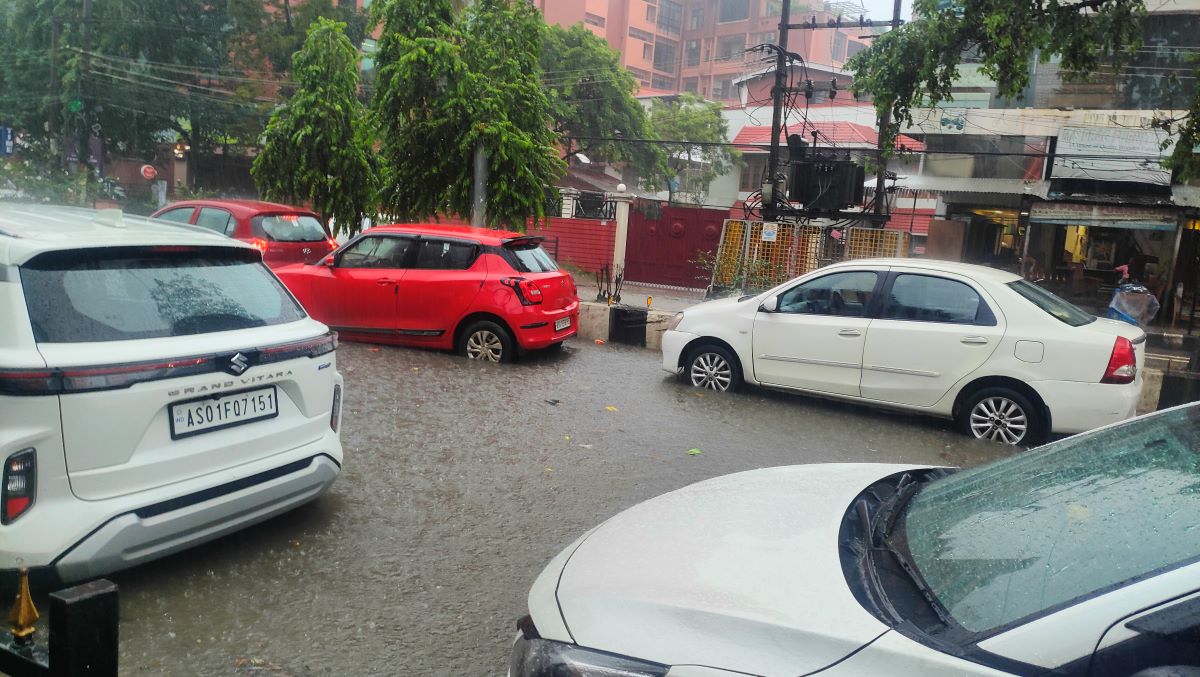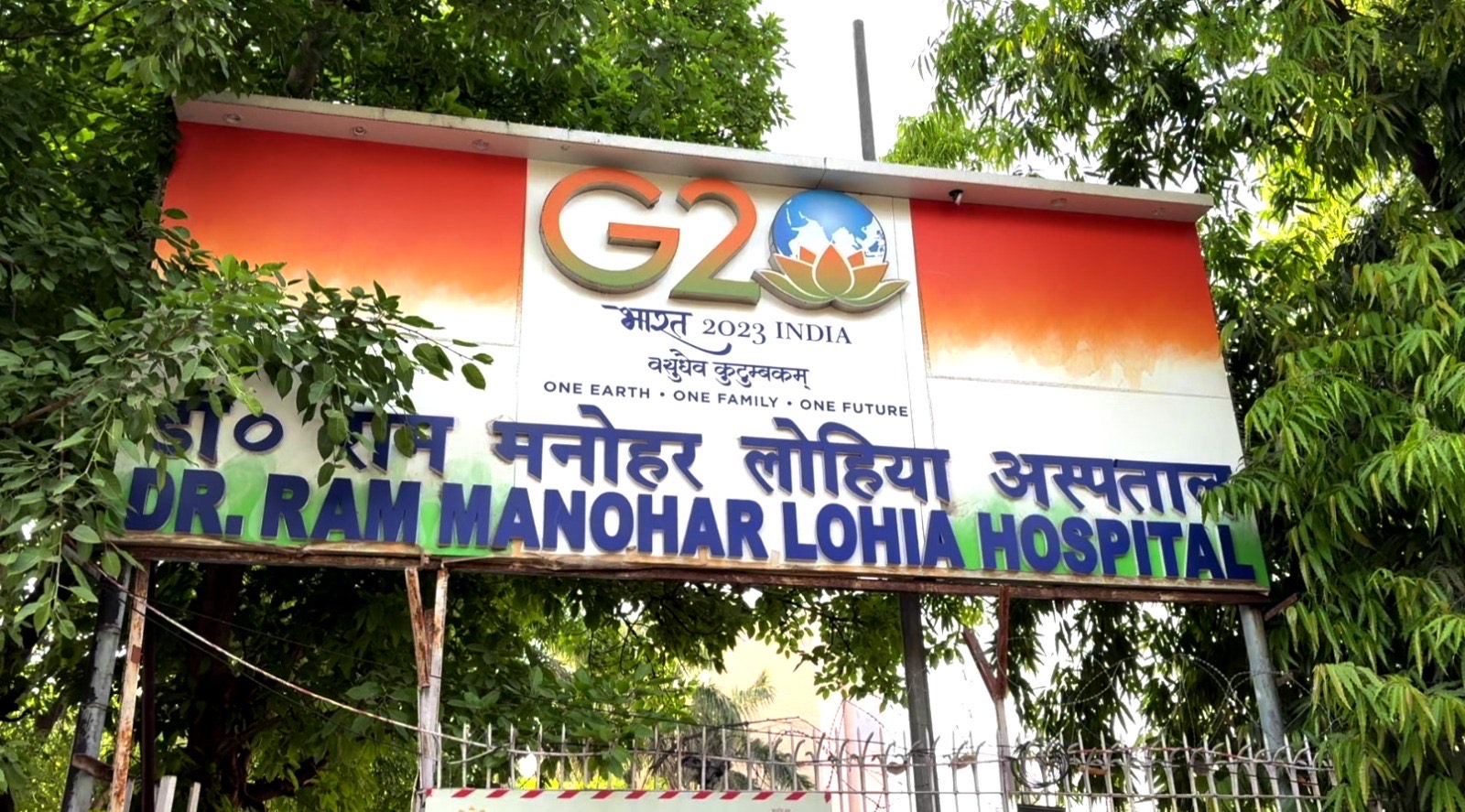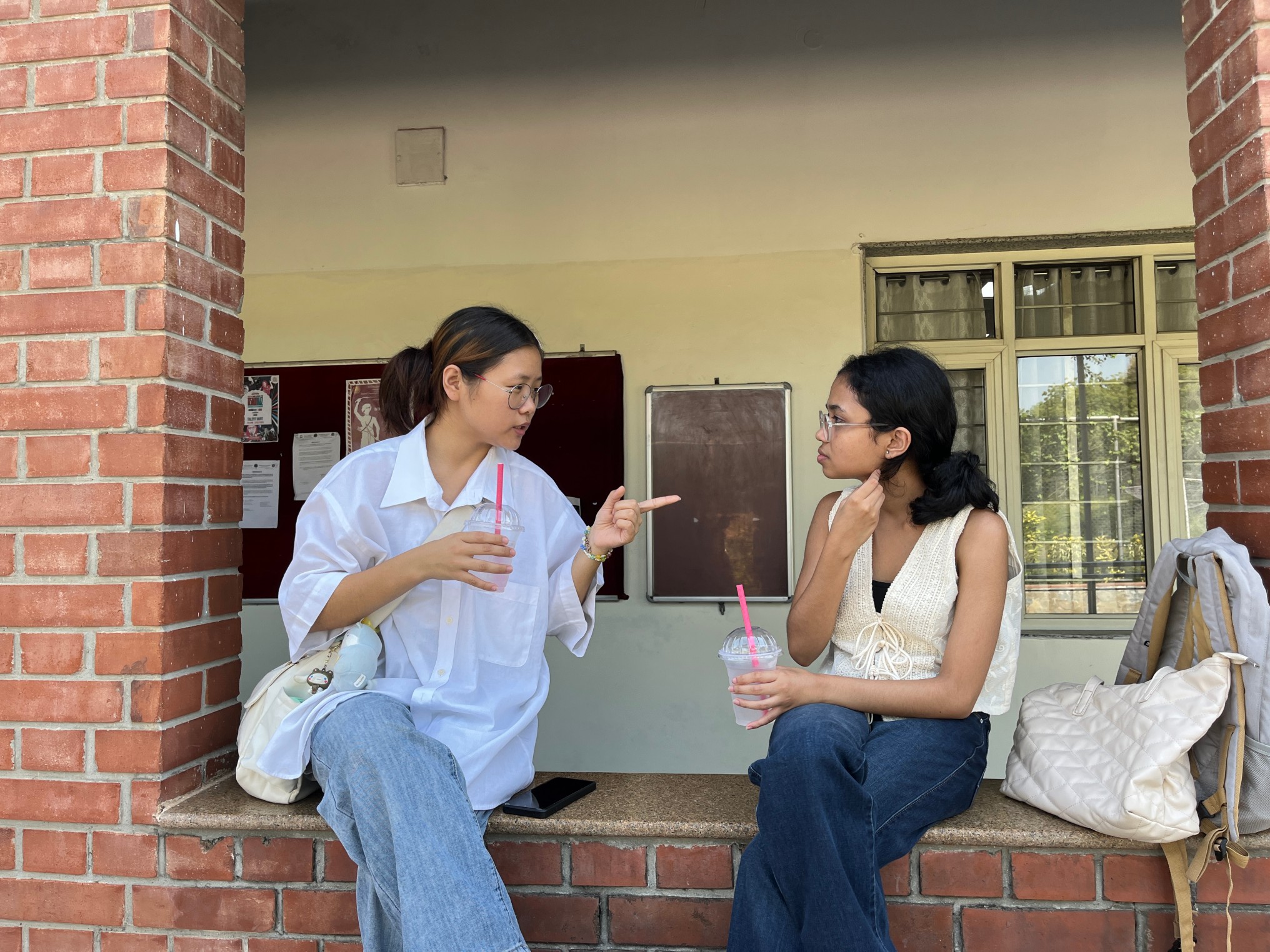Every year during monsoons several areas of Guwahati city experience severe floods. According to a report by the District Disaster Management Plan (DDMP) of Kamrup Metropolitan, floods in Guwahati alone in the past two years (2022-23) have affected 15,879 people. Monsoons also trigger landslides in vulnerable areas such as Kamakhya, Noonmati, Kharguli Ramsa Hill and Choonsali – annually threatening the lives of people inhabiting these areas.
Water from heavy showers and nearby water bodies often doesn’t drain properly due to the lack of proper urban planning. Poor drainage and sanitation systems further aggravate the problem by increasing the number of cases of carrier-borne diseases such as Japanese Encephalitis (JE), dengue and Acute Encephalitis Syndrome (AES).
A recent report claims that this year since April, 90 patients have been admitted with JE to the Guwahati Medical College Hospital, 22 of whom have lost their lives to the deadly virus. In a horrifying case from July 2024, an eight-year-old boy fell into an open drain during a flash flood at Jyoti Nagar and his body was recovered after three days of long search. This incident highlights the problem of open drainage systems that pose irreparable threats to the lives of people during floods. Citizens find little hope since they are faced with the same problems every monsoon, without any signs of solutions shortly.
The woes of the citizens
N*, a resident of Bhangagarh in a conversation with FII, lamented, ‘My lane is located near the Bharalu tributary of Brahmaputra. Every monsoon, my area faces severe waterlogging during heavy rain. It becomes very difficult for us to carry on with our day-to-day activities. Reaching the office on time becomes exceptionally difficult. Since floods happen every year, the people living on the ground floors of our area face serious damage. The flood water comes into their houses, making it impossible for them to survive in those conditions. The government tries to maintain the cleanliness of drains and roads after the flood, but it is not enough.’
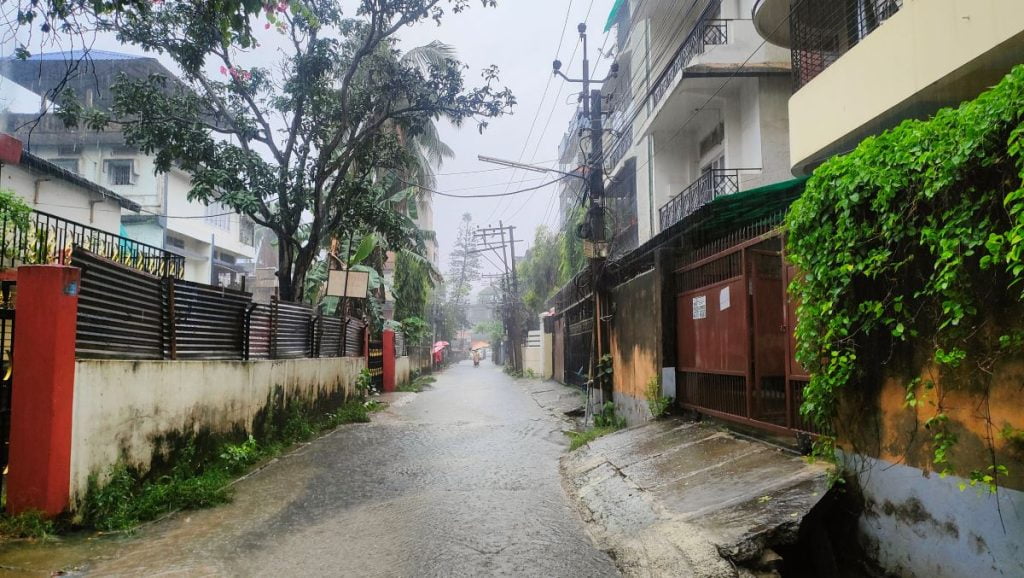
S*, a retired government official residing in Sarumotoria told us, ‘Artificial floods in my area happen every year during the monsoon. Even after the rain subsides, the water level does not go down for many days. Purchasing essential commodities also becomes impossible due to the waterlogging. Our lives come to a standstill during this time. I as a retired official can to an extent postpone going outside during these days, but the lower-income people in our area are hit the worst. The drainage system is flawed in most places in Guwahati, and flash floods have become a large part of our reality. We are tired of the empty promises that are made to us every year. The situation needs to change.’
The realities of the marginalised communities and localities during the floods are grave. Kaccha houses in low-lying areas are easily damaged during waterlogging. Lack of proper sanitation during this period also makes them susceptible to several diseases that further weaken their immune systems.
P* a domestic worker from Bhaskar Nagar talked about her monsoon battles, ‘I have a family of three and we live in a kaccha house. Work is uncertain most of the time, I find it difficult to manage my family expenses and also send my son to school. Every year during and after the monsoon, I am forced to spend a significant part of my income on repairing the damages. It drains our family financially. I wade through the knee-high water to reach my employers’ houses. I know if I miss even a day, they will cut my salary. I truly cannot afford it.’
P* informed FII that garbage is often not disposed of properly and merely dumped in certain open areas. Open drains around the area therefore get clogged and the dirty water flows into their houses, ‘My son suffers from weakness, so he easily falls sick during these months. Every time he gets a fever during these days, I worry if it is something serious. Visiting doctors and hospitals also becomes difficult because of my work schedule. My pains never end.’
Waterlogging adds to the problems faced by children and old people. Snake bites become common, and children often fall into the open drains.’My father slipped on his way back home from the market and broke his hip. Now he is bedridden.’ R*, a rickshaw driver from Anil Nagar told us. He urges for government aid and intervention, ‘Even in these terrible road conditions, I am forced to work to earn my daily bread and provide medicines for my father. The government really needs to look into our condition and help us. Surviving monsoons have become difficult in Guwahati.’
Official say on floods and waterlogging
Urban planning in Guwahati is inefficient. Unregulated construction, rampant deforestation for big projects and lack of attention to the overburdened or improper drainage systems often exacerbate the problem of waterlogging and landslides in the city.
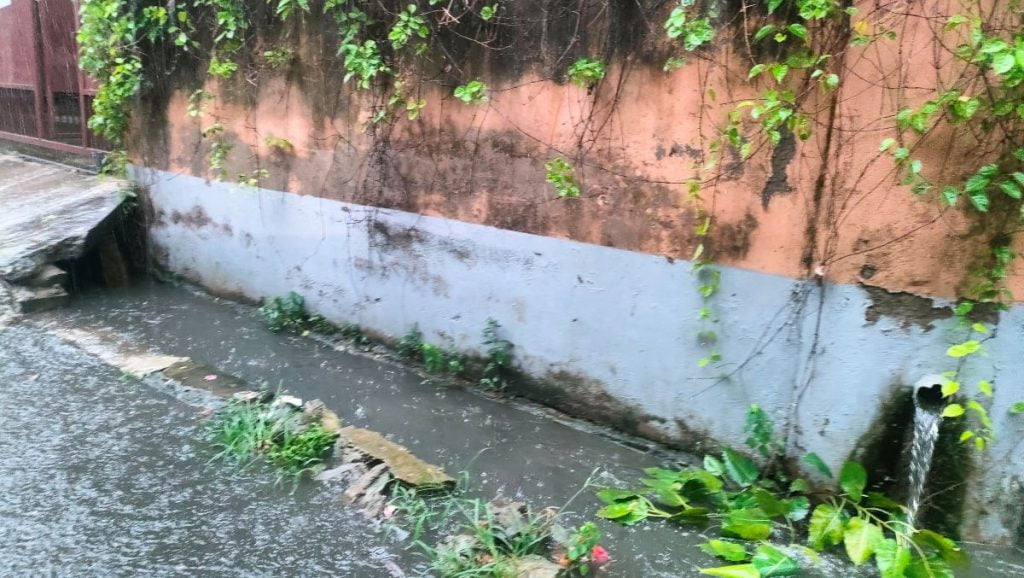
A conversation with an official from the District Disaster Management Authority revealed that the government mostly focuses its energy on ensuring the availability of emergency services over long-term solutions. ‘During the flood season, we have a 24*7 operational toll-free number, 1077, where people can reach out in cases of emergency. We try to ensure that we are prepared with facilities like healthcare and food and water aids during these times. There is only so much we can do with these short-term, emergency measures. Structural changes are the only way the problem of artificial waterlogging can be eradicated.’
Upon being asked to state some of the reasons for urban floods in Guwahati, a Guwahati Metropolitan Development Authority official told us, ‘Drainage systems that exist in Guwahati are unable to adequately function during the floods. They are not enough. Improper garbage disposal and silt often clog the drains and cause more issues. The city is mostly unorganised and congested, which is an added problem.’ He suggested, ‘It is possible to turn the situation around with proper construction of drainage systems around the city in places which experience waterlogging. The Water Resources Department has already sanctioned plans to build more embankments to control the impact of the flood. Areas like Gitanagar and Narikalbasti no longer face waterlogging problems like they did even a few years back, due to the implementation of diversion projects.’
Another official from the Guwahati Metropolitan Development Authority informed, ‘There are so many lanes and bylanes in Guwahati in addition to the main roads. Municipality and urban development authorities have converted many open drains to covered drains, but we have yet to cover all drains. Moreover, other developmental projects are being undertaken around the city. The paucity of funds makes it difficult to solve the problem of waterlogging altogether. People also need to be sensitised to the drainage problem. Citizens often use drains as dumping sites for their garbage which clogs up the drains. Raising awareness against this practice can help in the meantime.’
Waterlogging is a perennial problem in Guwahati that severely impacts the lives and livelihoods of people during and after the monsoons. Proper floodwater diversion projects need to be undertaken. Open drains need to be covered up and cleaned at regular intervals to stop vector-borne diseases from spreading. The public asks for long-term solutions that will eradicate artificial flooding in the city and improve the quality of their lives.
*Names kept hidden to protect identity
About the author(s)
Madhusmita Mukherjee (she/they) is a queer feminist writer and photographer from Assam who is passionate about advocating gender equality and social justice. She completed her postgraduation in English from the University of Delhi (2022-24). Her academic interest lies in gender studies, media memory and cultural studies. Her recent publication features in the Zubaan anthology Riverside Stories: Writings from Assam edited by Banamallika.
